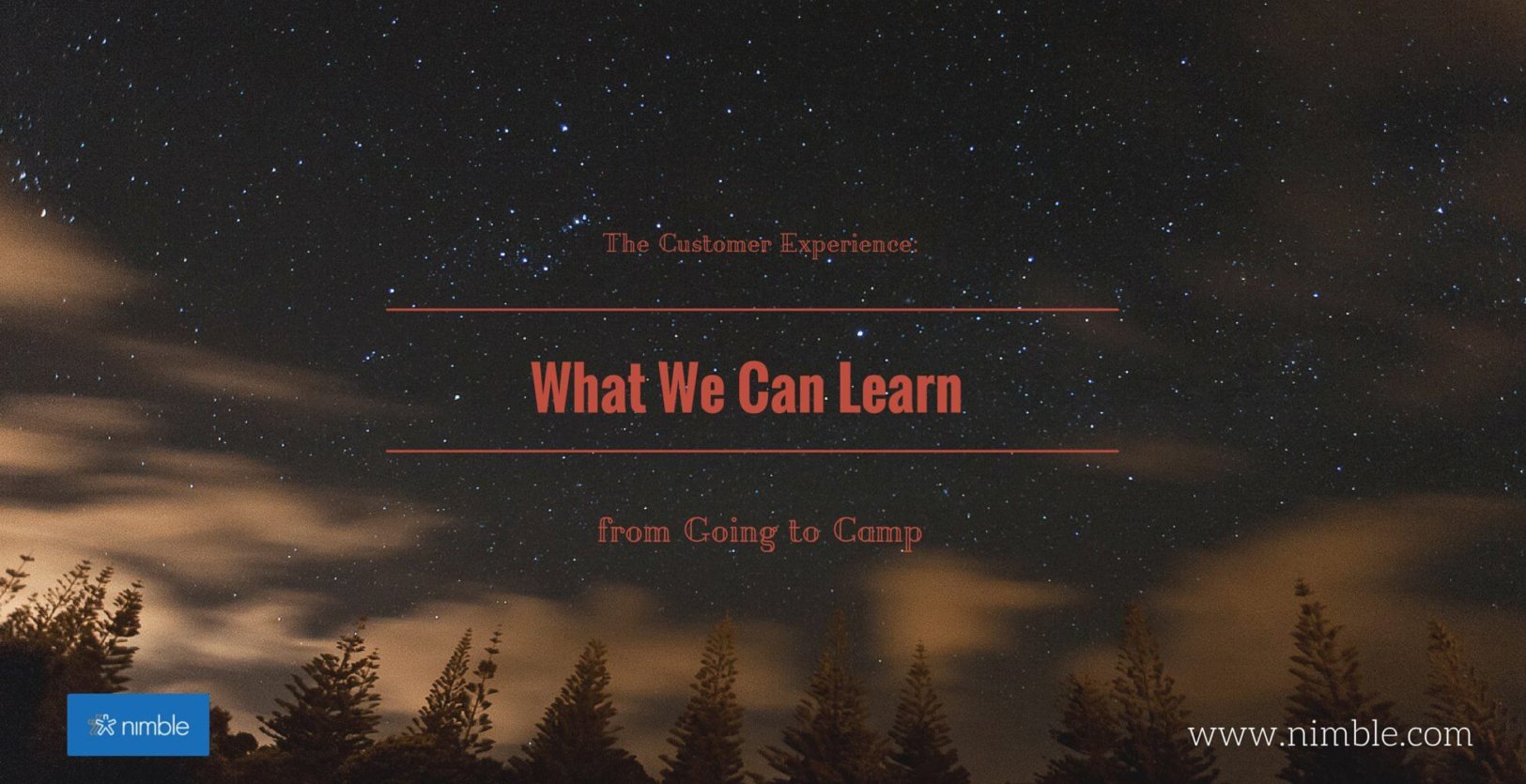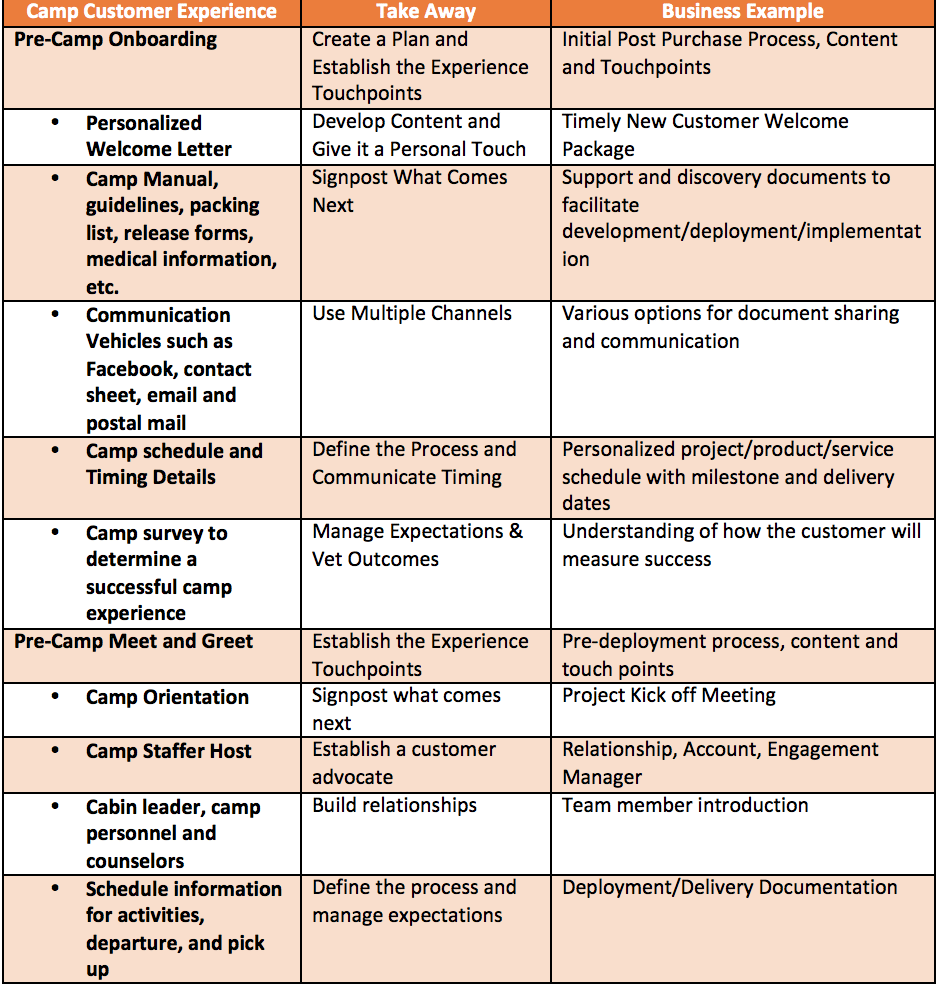One of our associates is preparing to send her child, Evan, off to a 3-week overnight summer camp for the first time. Over the past few months she’s shared how the family went about selecting the right camp for them, and then the amazing job the camp did managing the experience after the selection and before the start of camp. It struck me as a familiar buying process for a considered and consultative sell, followed by an impressive customer onboarding process. So, as you read this article think about how this model could be adapted by your organization to improve your customers’ experience.
The selection process started out much like that of one of your customers. After talking with friends (peers), school counselors (trusted advisors), and family members (stakeholders), both mother and son established some criteria (Request for Proposal). Then she identified the top choices (short list), visited the websites that had links to videos, stories from campers (customer testimonials) and counselors (employees), read reviews, did background checks, and had initial conversations with the camp administration (sales) to narrow down the selection. Her son and husband (other members of the selection committee) joined in the process once she identified her top options and together they picked the winning camp.
With camp just around the corner, she was beginning to get a little anxious about her son going away from home for the first time (buyer’s doubts). Camp management has an excellent communication process for this common buying scenario.
The first post purchase experience was the welcome package. It’s probably similar to what many of you send to your new customers. It contained the following items:
• personalized welcome letter from the camp director,
• information packet organized into the pre-camp prep (such as what to pack, medical and vaccination history, etc.) and the at-camp documents (including a recommended schedule and tips for mailing cards and care packages),
• invitation to join the Facebook page for that camp’s session to view daily pics,
• invitation to come to a free in-town pre-camp get together to meet staffers and other campers
• camp guidelines manual and camp contact sheet,
• questionnaire which included one key question, what one experience do you want your child to have while at camp?,
• pre-paid self-addressed envelope in which to return all of the docs (no nickel and diming here).
Evan’s package also contained a personalized welcome letter from his cabin leader, information about the cabin and his cabin mates, loads of pictures, a schedule of all the activities, and one question that he needed to answer and return in the package, “My camping experience won’t be complete without… “ Now this is a camp that understands managing expectations and clarifying success outcomes.
Takeaway: Do you have a welcome “package”, orientation process, and a way to vet expectations?
The second post purchase experience is associated with the pre-camp meet and greet. A few days before the meet and greet, she received the promised mail package with badges, attire recommendations, the name of camp staffer who would host them at the event, and an activity schedule which included orientation, as well as a few “fun” camp activities. Evan hasn’t even gone to camp yet and she’s starting to sound like a referral in the making.
Upon their arrival, they were met promptly by their camp staffer host who took them to meet the cabin leader, other campers, and made sure they made it through all of the activities. They left that evening with her son having made a few new acquaintances. When they arrived home there was already an email from the camp staffer host thanking them for attending, mentioning how much she enjoyed meeting them, and that she was looking forward to spending time with Evan at camp.
Takeaway: How do you communicate who serves as the customer advocate and is their role clear?
Camp is just a few weeks away, she’s pulling together all the gear and she’s started a scrapbook that looks like it’s going to be an excellent customer experience manual she can share with other mothers considering this camp. Everyone is looking forward to the at-camp experience.
The table below provides takeaways from this highly positive experience and examples to help you compare, and ultimately improve, your post-purchase experience to create loyal customers and advocates for your business.
Summary: Marketing is responsible for creating, retaining and increasing the value of customers. Implementing a best-in-class post-buying plan to create positive, meaningful, and relevant customer experiences goes a long way in helping achieve those goals. Start using this metrics on your business by purchasing your workbook “Leveraging Eight Key Metrics for the Customer-Centric Organization.”
Header Image Courtesy of Flickr User Silvia Zuur. CC BY 2.0.


